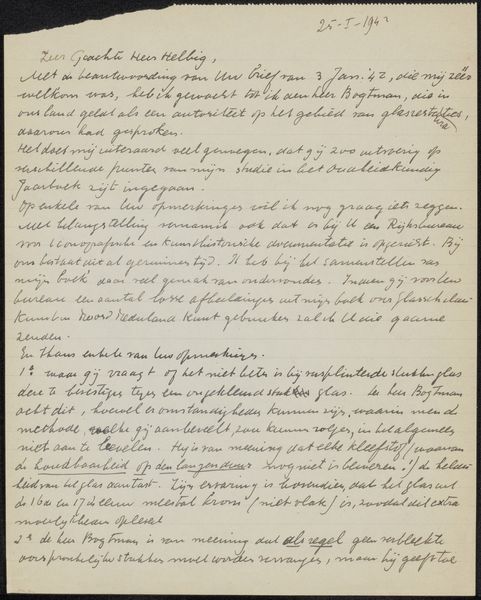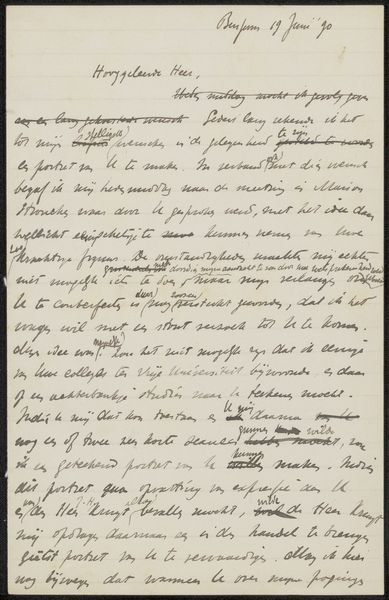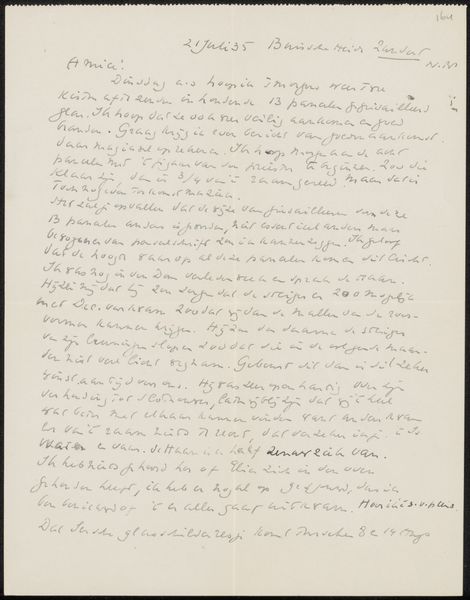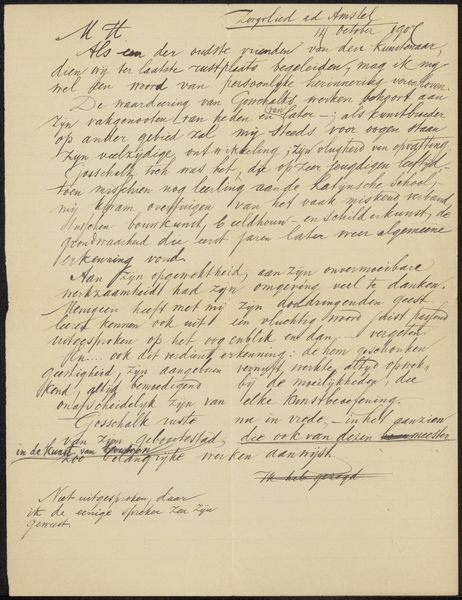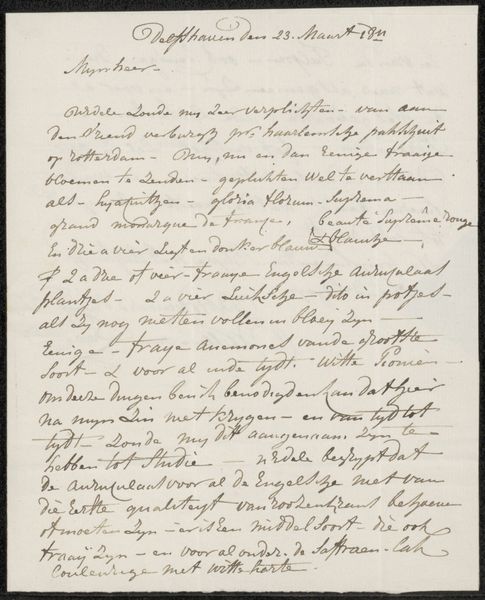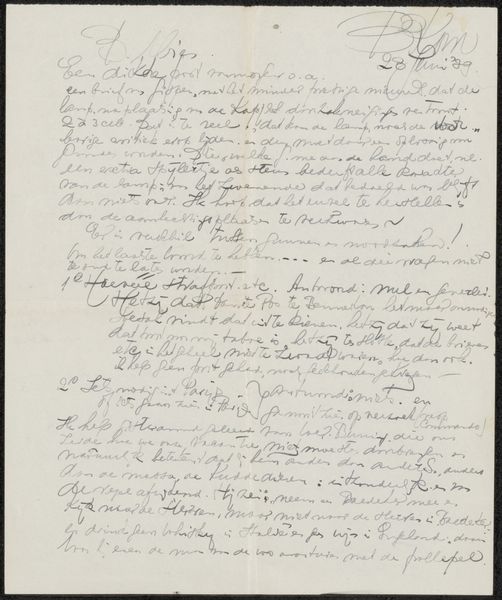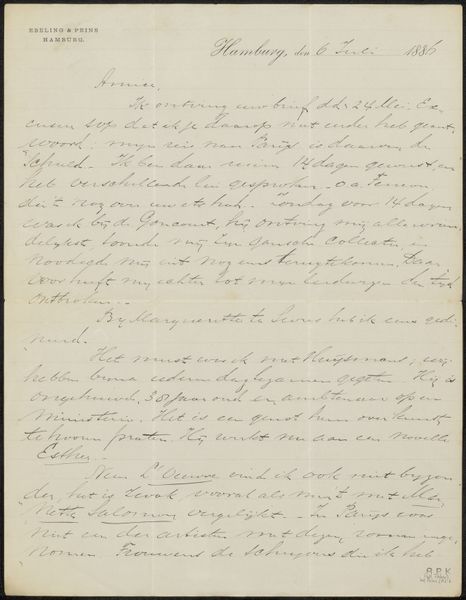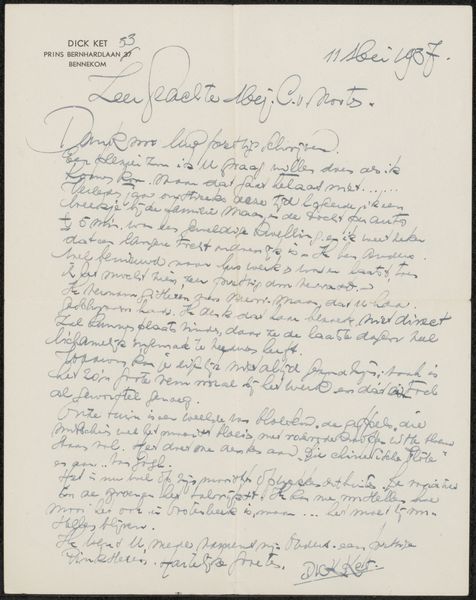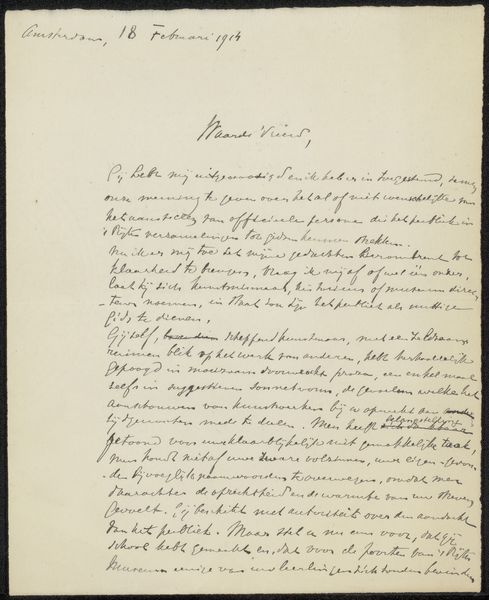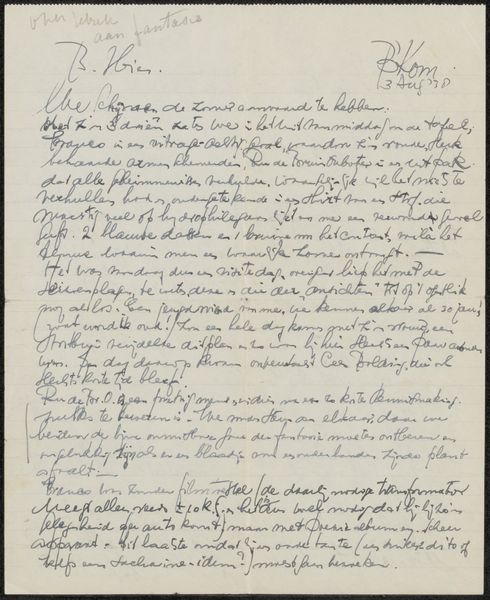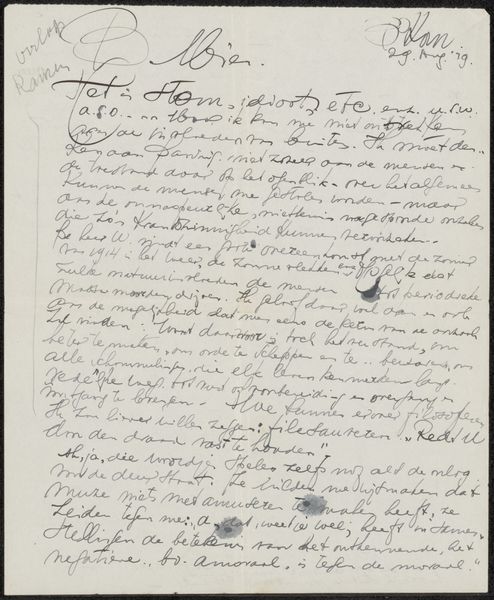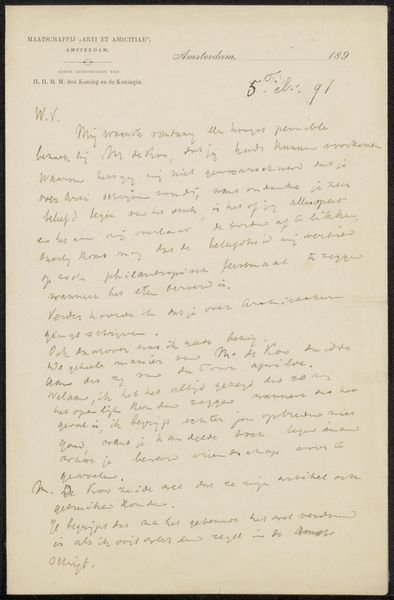
drawing, paper, ink
#
portrait
#
drawing
#
paper
#
ink
#
calligraphy
Copyright: Rijks Museum: Open Domain
Curator: This piece, titled "Handschrift betreffende Julie de Graag," dates to before 1927 and presents us with a manuscript focused on M.J. de Graag. The artwork is composed of ink on paper and features a portrait in elegant calligraphy. Editor: My first thought is, "What a beautiful texture." Even without understanding the text, the density and rhythm of the handwriting itself are visually captivating. It feels intensely personal. Curator: Indeed. Consider the social function of such documents then. Before typewriters were ubiquitous, such handwriting wasn't just personal; it was how information circulated and was preserved. This calligraphy signals a level of education and status. Editor: Absolutely. Looking closer, the weight and flow of the ink, the fiber of the paper itself… these details hint at the care and time invested. It transcends simple communication; it's craftsmanship. The choice of ink, the type of pen—all elements that reveal a level of material knowledge and a commitment to quality. Was this a common kind of paper or was it selected to express the importance of the content? Curator: Given the formal nature and that it contains biographical details of Julie de Graag, I think it could possibly be part of an archive record. Editor: You're right; knowing that it's a biographical piece gives the calligraphic portrait an almost celebratory function, a way to publicly formalize and give importance to this life through the quality of production and labor behind its physical realization. The texture feels less like arbitrary handwriting now. Curator: That's the interplay between the personal and the public spheres playing out on this sheet. As the art historian, my appreciation of the political image and role in early archives is influenced and sharpened by your more materialist view. Editor: And likewise, examining its production makes me curious to now search public records of that period! It's quite fulfilling how considering material and process has changed the way I connect to the piece.
Comments
No comments
Be the first to comment and join the conversation on the ultimate creative platform.

